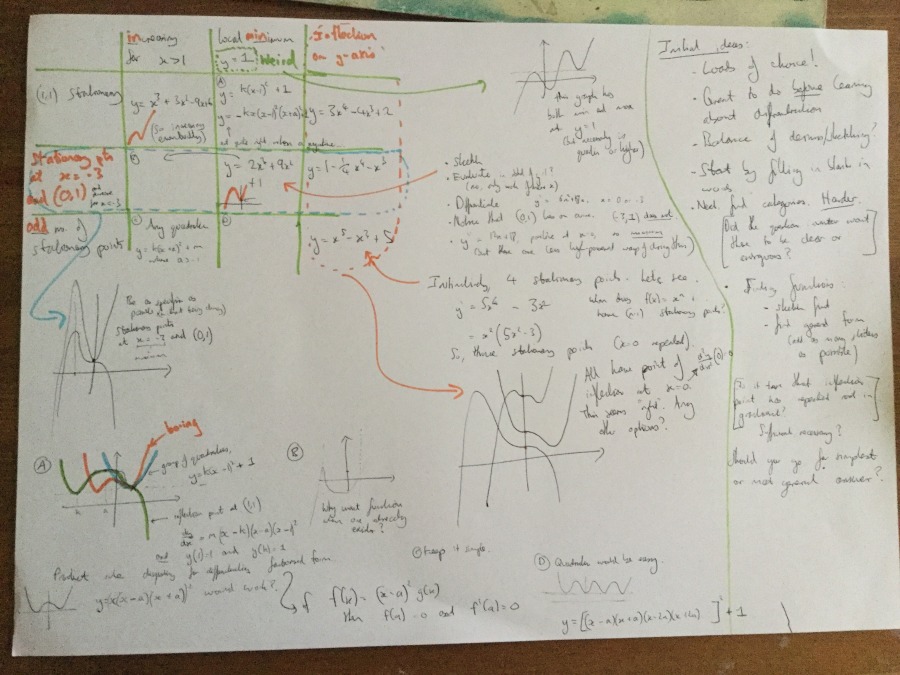An engaging day thinking about rich A level resources, with Underground Maths. The website is crammed full of rich tasks with plenty of teacher support. A useful reference.
We did this Starter activity. A many-ways problem – either very algebraic or very graphical.

A problem that doesn’t look hard, but actually is challenging. How does this affect motivation? Would I prefer a problem that looks really scary but actually is pretty simple?
This would be a great problem to throw at students before they know how to differentiate – if this is the headache then what is the aspirin?
Mathematical Mindsets
We discussed things that we would like our students to think about mathematics, using these cards. Some key thing that I want my students to think:
- It is good to get stuck. (Teachers need to model this). Also, it is okay to get stuck-in!
- There are no right answers in maths.
- Problem-solving is the most important thing in Maths.
- Good problem-solvers do well in exams
- Understanding > memory (within reason)
- If you pass an exam using death by practice paper then you might get a good grade but you will not do well in life. You are merely delaying your failure.
Get stuck-in. Get stuck.
Timing a problem
There seem to be three times to use problems:
- Before you know the techniques. Motivation for learning techniques
- Just after you have learnt the technique. Application of fresh knowledge
- A long time after you have learnt the technique. To encourage connections, recall, re-deriving knowledge.
From GCSE to A level
There is an excellent transition problems bundle, using GCSE knowledge but requiring deeper reasoning.
- Between the lines (why is there an actual answer for this!)
- A tangent is
- A perfect fit (with an excellent extention question: how many pythagorean triples make a triangle with inscribed circle of radius 6? We found 6 integer solutions. What about a circle of radius 7? We found 3 integer solutions. What about a circle of radius n? Lovely opportunity to use excel or python)
- Name that graph
- Quadratic solving sorter
You cannot do this task without knowing what an asymptote is. This video clip shows students struggling to use the equation of a circle to find an asymptote (thus showing a deep misconception), without any teacher intervention. When do we leave students to struggle and when do we step in? Does the teacher need to know about every mistake students make?
What is 0 the power 0? You need to know the answer to properly understand this problem. Outstanding problem generation.
We believe that there should not be a right method or a right answer. This problem fails this criteria.
Modelling
- Easier scenarios
- Harder scenarios (will require expert knowledge from other subjects – chance to utilise student’s other interests, or frustrating to the expert mathematician?)
- Desmos has some excellent modelling tasks, including waterline.